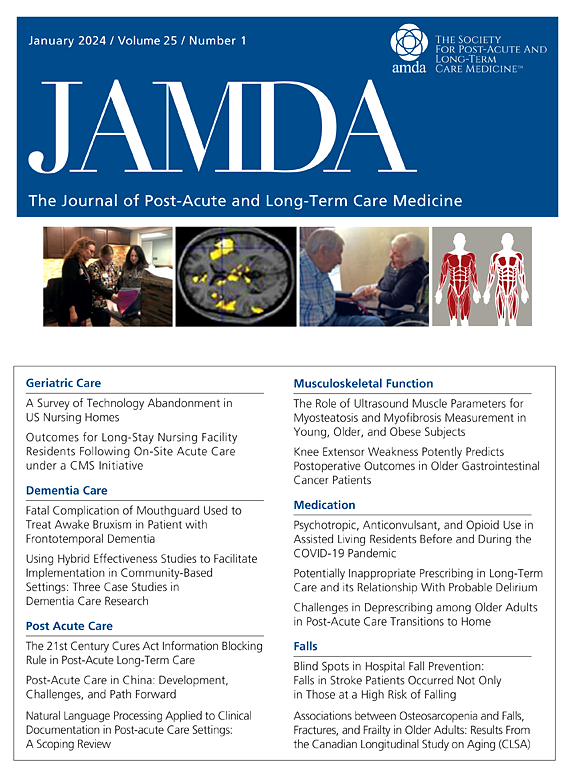Trends in End-of-Life Hospitalizations of Nursing Home Residents between 2011 and 2020: Analyses of German Health Insurance Data
IF 4.2
2区 医学
Q2 GERIATRICS & GERONTOLOGY
Journal of the American Medical Directors Association
Pub Date : 2025-03-31
DOI:10.1016/j.jamda.2025.105540
引用次数: 0
Abstract
Objectives
To investigate trends in end-of-life hospitalizations among nursing home residents between 2011 and 2020.
Design
A retrospective cohort study was conducted.
Setting and Participants
Using German claims data of the statutory health and long-term care insurance fund AOK Niedersachsen, all residents aged ≥65 years who were newly admitted to a nursing home between January 1, 2011, and December 31, 2020, and became deceased in the calendar year of admission were included.
Methods
Proportions of deceased nursing home residents dying in hospital and being hospitalized in the last 7 and 30 days of life were analyzed and stratified by 2-year periods. Multiple logistic regressions were performed to examine changes over time, adjusting for covariates.
Results
A total of 26,359 decedents were included (mean age, 84.0 years; 61.0% female). Proportions of nursing home residents dying in hospital decreased from 32.0% to 27.4% (odds ratio [OR], 0.88; 95% CI, 0.81–0.96), being hospitalized in the last 7 days decreased from 42.5% to 36.3% (OR, 0.84; 95% CI, 0.77–0.91), and being hospitalized in the last 30 days decreased from 61.6% to 56.7% (OR, 0.88; 95% CI, 0.82–0.96) between 2011–2012 and 2019–2020. Male sex, lower care dependency, and younger age (aged ≤94 years) were associated with an increased likelihood of end-of-life hospitalizations in all analyses. Of the 7923 terminal hospitalizations, mean length of hospital stay was 9.1 days and 33.4% lasted up to 3 days, with no changes over time.
Conclusion and Implications
End-of-life hospitalizations of German nursing home residents have decreased over the years, but are still common. Because more policies have been introduced globally in recent years aimed at improving end-of-life care in nursing homes, longitudinal studies investigating trends with more recent data are needed.
求助全文
约1分钟内获得全文
求助全文
来源期刊
CiteScore
11.10
自引率
6.60%
发文量
472
审稿时长
44 days
期刊介绍:
JAMDA, the official journal of AMDA - The Society for Post-Acute and Long-Term Care Medicine, is a leading peer-reviewed publication that offers practical information and research geared towards healthcare professionals in the post-acute and long-term care fields. It is also a valuable resource for policy-makers, organizational leaders, educators, and advocates.
The journal provides essential information for various healthcare professionals such as medical directors, attending physicians, nurses, consultant pharmacists, geriatric psychiatrists, nurse practitioners, physician assistants, physical and occupational therapists, social workers, and others involved in providing, overseeing, and promoting quality

 求助内容:
求助内容: 应助结果提醒方式:
应助结果提醒方式:


